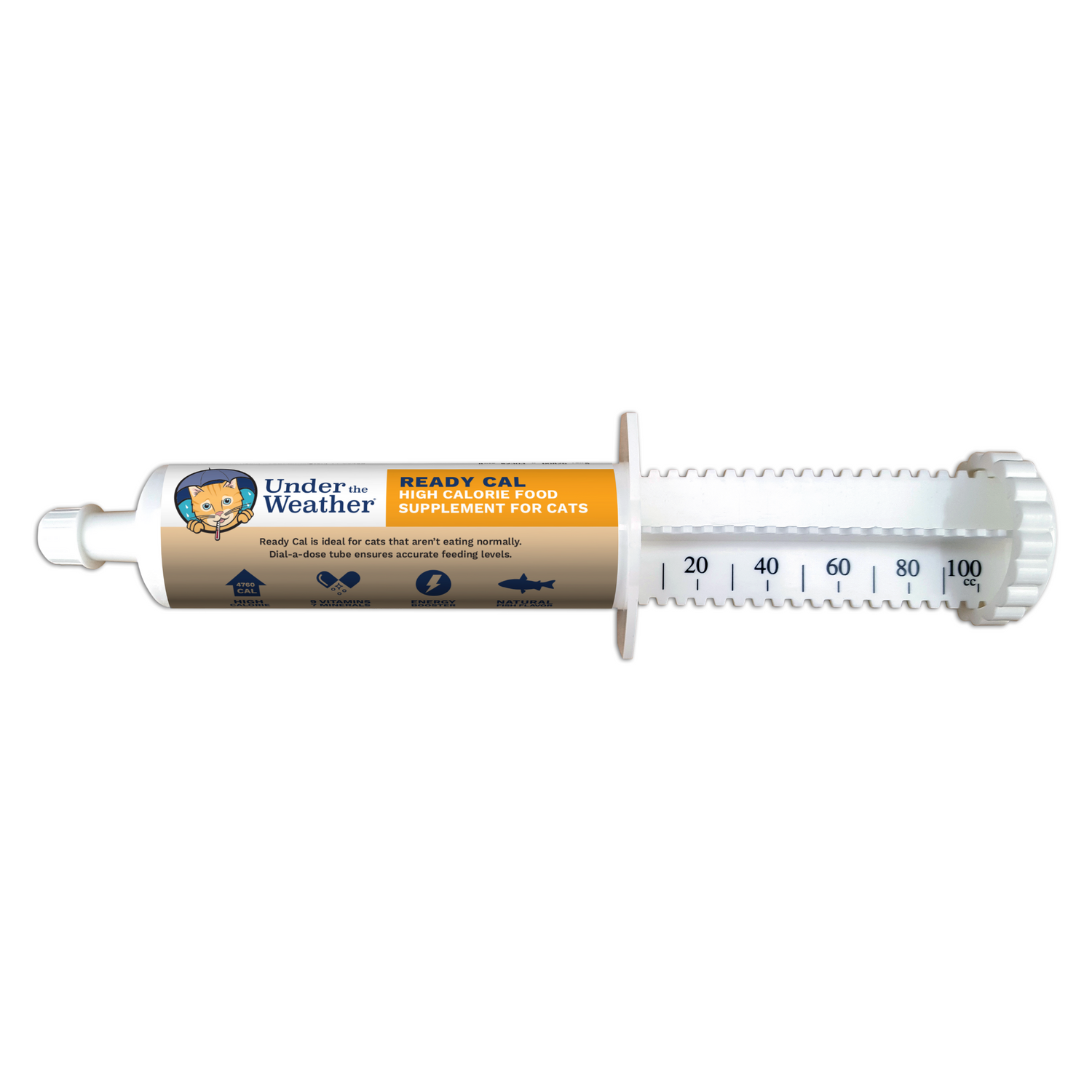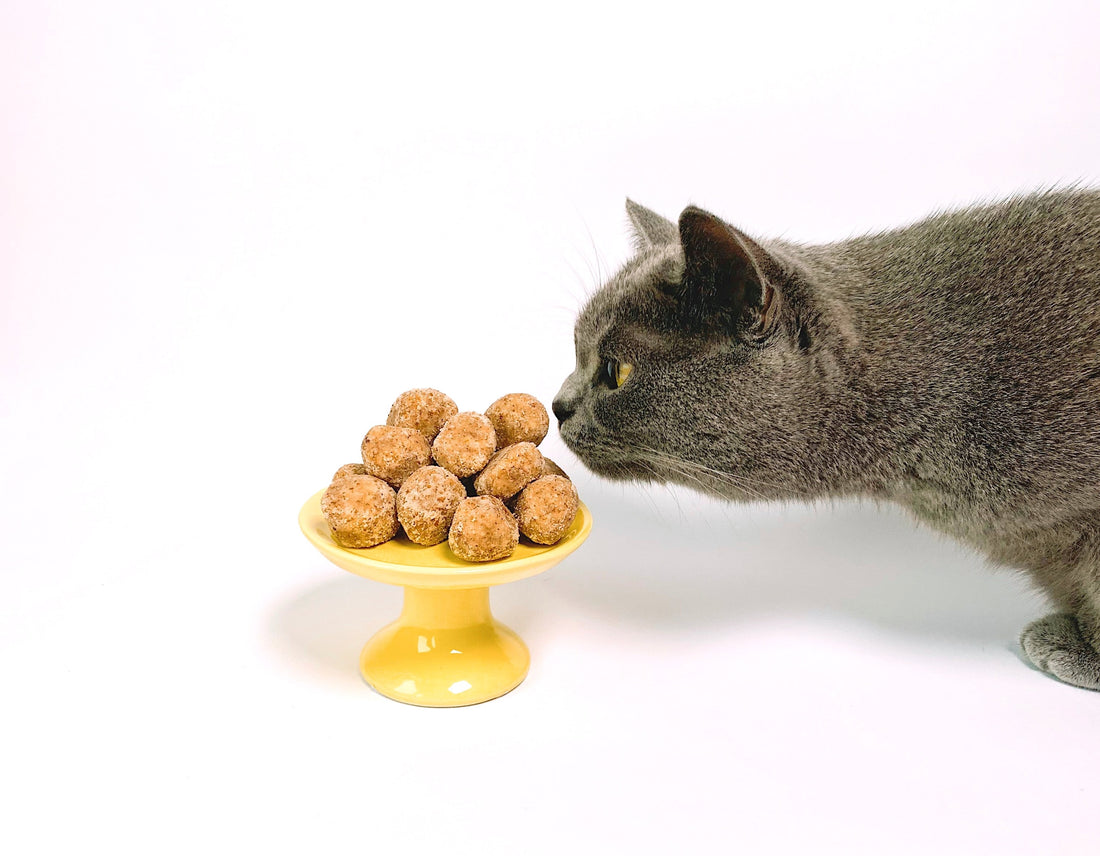Have You Got a Fat Cat?
If so, you are not alone. According to recent studies, an astonishing 59% of cats in the US are overweight or obese. One potential contributing factor is that cats, especially those that are indoor-only, tend to live sedentary lives. And although many dogs are also considered overweight (56% in the US) people are more inclined to provide them with daily exercise, in part because unlike a cat that uses a litterbox, a dog needs to go outside to do their business.
It should also be noted, that although outdoor cats may burn more calories daily just by being outside, due to the many dangers they are exposed to, they also typically live much shorter lives than cats that are kept indoors.

Why Does My Cat Need to Lose Weight?
The simple answer is, to keep them healthy!
Surprisingly, being just 2 pounds overweight can cause a number of health issues in cats, including diabetes, heart disease, and high blood pressure. These conditions often lead to illness and disease, resulting in a shorter lifespan.
Being overweight can also cause inflammation, leading to stiff joints and arthritis. And while not necessarily life-threatening, it can certainly cause your cat discomfort and pain, thus diminishing their quality of life.
How Do I Know If My Cat Is Overweight?
While spotting an obese cat is easy, determining if a cat is just moderately overweight can be more difficult.
This can be due to their breed, their body type/shape, and even the amount of hair they have.
Still, because even a few extra pounds can negatively impact your cat’s overall health, it’s important to know and recognize the signs that your cat needs to lose some lbs.

Signs Your Cat Is Overweight
- Has low energy.
- Seems lazy and sleeps a lot.
- Not playful, or less playful than they used to be.
- Increased mobility issues and signs of stiffness, joint pain, and arthritis.
- You can’t easily feel their ribs when running your hands across their ribcage.
- Lack of a defined waist when viewing them from the side or from above.
- Developed at the Nestle Purina Pet Care Center, the “Body Condition System” is a scoring system to determine if an animal is underweight, overweight, or at an ideal weight.
It includes the chart below, created as a tool for visually assessing a cat.

How To Help Your Cat Lose Weight Through Diet
Step one is to talk to your vet. They can help you set up a gradual weight loss plan with a realistic and healthy goal for your kitty. They can also assess your cat for any existing or underlying health issues, which is very important before starting any type of new diet.
Don’t “free-feed”. Meaning, don’t leave a big bowl of kibble out 24/7. Instead, feed “wet food” (with or without kibble) at set times so your cat knows when it’s time to eat. Wet food includes store bought canned food, as well as home cooked foods.
Buy food that contains high quality protein and fiber. This will help your cat get the calories and nutrients they need, without relying on unhealthy fillers that only make them feel full.
Cut back on treats, and instead of giving table scraps right from the table, if they are lean meats or fish, use them as a part of your cat’s meal instead.
As your cat gets older, consult your vet about adjusting how much you should be feeding them according to their age. Just like people, as cats age, their metabolism begins to slow down and they no longer need the same number of calories as they did when they were young.
How To Help Your Cat Lose Weight Through Activity
As we all know, when it comes to losing weight, healthy eating and proper nutrition is only one piece of the puzzle. Exercise, and just moving more not only burn calories, it promotes overall wellbeing.

Ways To Encourage Activity
Provide a cat tower, scratching posts, and of course, lots of fun toys. There are some really great cat toys that you can buy, but there are also tons of DIY toys that don’t cost a thing, and are super easy to make.
Play with your cat! Most cats enjoy playing, and it’s a very simple and fun way to encourage them to be more active. Plus, quality time spent together will also strengthen the bond between you both.
Create a window seat where your cat can look outside. Want to really keep their attention? Add some bird feeders!
Build an outdoor enclosure. A quick google search will show some amazing ideas that will fit any budget.
Take you cat for a walk! Yes, it is possible to walk a cat on a leash, but it may take a little time for them to get used to it. Start slow by sitting outside with your cat while they are on a leash so they become more comfortable with it. And because cats can easily slip out of a collar, always use a harness with your leash.
If it’s appropriate for you and your current cat, consider adding another pet to your household. Having a companion to play with and just hang with has the potential to enrich your cat’s life in so many ways. However, this a very big decision that requires a lot of thought and planning, and should never be rushed. Consider fostering a new pet before committing to adopting them. This way you can be sure they will be a good fit for your family.
If you’re looking for some really simple and very creative ways to keep your cat active and mentally stimulated, this video is a must watch! A HUGE THANKS to the MSPCA for creating it.
When a cat is overweight, even by just a few pounds, it can lead to illness and disease.
It can also diminish their quality of life, and shorten their lifespan.
If you think your cat needs to lose some weight, speak with your vet about a proper diet and exercise plan to ensure your kitty is given every opportunity to live a long, happy, and healthy life!
Every Sale Supports a Shelter Pet. Learn More.
Made in Vermont. Learn More.
If you suspect your pet is sick, call your vet immediately. For health-related questions, always consult your veterinarian, as they have examined your pet, know the pet's health history, and can make the best recommendations for your pet.






